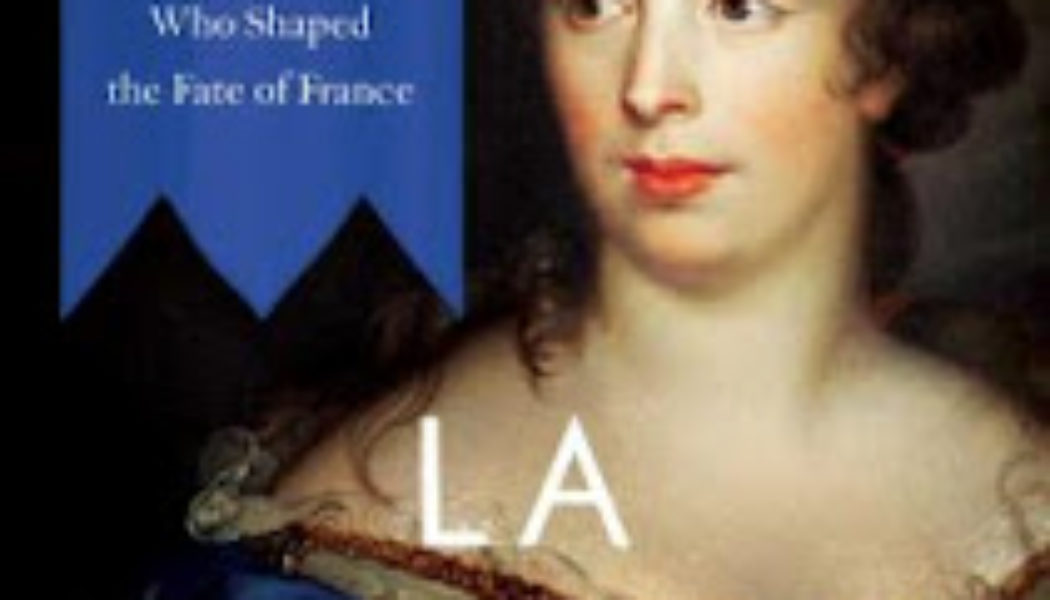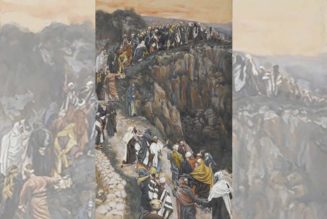From Pegasus Books with the double subtitle: The Life of Marie de Vigneron–Cardinal Richelieu’s Forgotten Heiress Who Shaped the Fate of France:
A rich portrait of a compelling, complex woman who emerged from a sheltered rural childhood into the fraught, often deadly world of the French royal court and Parisian high society—and who would come to rule them both.
Married off at sixteen to a military officer she barely knew, Marie de Vignerot was intended to lead an ordinary aristocratic life, produce heirs, and quietly assist the men in her family rise to prominence. Instead, she became a widow at eighteen and rose to become the indispensable and highly visible right-hand of the most powerful figure in French politics—the ruthless Cardinal Richelieu.
Richelieu was her uncle and, as he lay dying, the Cardinal broke with tradition and entrusted her, above his male heirs, with his vast fortune. She would go on to shape her country’s political, religious, and cultural life as the unconventional and independent Duchesse d’Aiguillon in ways that reverberated across Europe, Africa, Asia, and the Americas.
Marie de Vignerot was respected, beloved, and feared by churchmen, statesmen, financiers, writers, artists, and even future canonized saints. Many would owe their careers and eventual historical legacies to her patronage and her enterprising labor and vision. Pope Alexander VII and even the Sun King, Louis XIV, would defer to her. She was one of the most intelligent, accomplished, and occasionally ruthless French leaders of the seventeenth century. Yet, as all too often happens to great women in history, she was all but forgotten by modern times.
La Duchesse is the first fully researched modern biography of Vignerot, putting her onto center stage in the histories of France and the globalizing Catholic Church where she belongs. In these pages, we see Marie navigate scandalous accusations and intrigue to creatively and tenaciously champion the people and causes she cared about. We also see her engage with fascinating personalities such as Queen Marie de Médici and influence French imperial ambitions and the Fronde Civil War. Filled with adventure and daring, art and politics, La Duchesse establishes Vignerot as a figure without whom France’s storied Golden Age cannot be fully understood.
While I’m not quite sure that the Duchesse d’Aiguillon “shaped the Fate of France”, she certainly had a great impact on the Catholic Church in France, French Canada (Quebec), and missionary fields around the world. The impact of the French Revolution kind of limits how much her political and social efforts could shape France’s fate/future. Slightly hyperbolic, but perhaps indirectly she did by supporting the monarchy against the Fronde and Mazarin so that King Louis XIV ruled absolutely, giving the later French revolutionists something to rebel against!
Nevertheless, McShea’s biography of this forgotten and misunderstood (at least in Catholic circles) French peer provides enough evidence of her subject’s impact on culture, literature, and religion in her lifetime that it does make the reader wonder why she has been forgotten.
Marie de Vignerot influenced Catholic piety and charity in Paris and beyond not just by her charitable contributions but even more by her vision and goals in giving the money to support her causes. One example that struck me because I am devoted to Eucharistic Adoration with a weekly hour at my parish, and regularly attend First Friday Benediction and Adoration at our Cathedral, was her influence at her parish church of Saint Sulpice while Jean-Jacques Olier was pastor. She supported him in establishing “a Benediction service that would take place in the church on the first Sunday and first Thursday of every month.” (p. 207) There was a procession with the Host in the Monstrance and adoration of the Host on the Altar, this in a time when “Benediction services were rare in France” and Marie regularly attended these services because her “devotion to Christ in the Blessed Sacrament . . . was deep and sincere.” She provided the funds for the candles, vestments, and the other liturgical objects required (the Monstrance, the thurifer, incense, and bells, etc). But as McShea explains, Marie also attached certain conditions, including “organ music, the ringing of the church bells, and the singing of numerous Latin hymns and responses” and “a vocal prayer for the repose of the soul of the late Cardinal Richelieu.” (p. 208)
This example is emblematic of the Duchesse’s involvement in her charitable causes: she didn’t just give the money, she gave direction and encouraged certain goals. McShea emphasizes that as the patroness of Saint Vincent de Paul, she inspired–not always with his immediate agreement–the methods by which improvements in the lives of the poor in rural France and civic Paris would be carried out. She had vision and the will and means to achieve her goals.
McShea notes one vision Marie could not achieve: she thought she had a vocation to the Carmelite order but her uncle Richelieu dissuaded her, even after her husband died, to pursue it. But she certainly balanced an active live with breaks for contemplation and prayer. For example, in the chapter on Saint Sulpice, McShea recounts a 1:00 a.m. visit Marie made to the Blessed Sacrament after a busy day: She wished to make her prayer where she could be “more returned and recollected” than at home. (p. 210)
The other goal that she did not achieve as she wished was to publish her uncle’s works and a history of his era based on his memoirs and other documents. The death of the author of the history she commissioned thwarted that latter effort as “the Jesuit leadership in Paris for some reason confiscated [his manuscript]” instead of giving it to her as he instructed (p. 367). She did negotiate the completion of his tomb in the chapel of the Sorbonne, but she could not maintain the unity of the house of Richelieu because of constant demands for money from her nephew Armand-Jean. His lawsuits and other actions against her estate made her last months, as she suffered from breast cancer, harder. She died on April 17, 1675.
The book is divided into two parts: the first when Cardinal Richelieu was alive and had taken such an interest in his niece, especially after her husband died (Part One–
Princesse Niece), including chapters 1 through 13, and the second after his death, since
he chose her rather than her younger brother as his heir and executrix (Part Two–
Pair [Peer]
de France, including chapters 32 through 58. There is also a charming “Author’s Afterword” demonstrating the personal link between the author and her subject (as she comes as close as she can to Marie’s grave site), Acknowledgements, Sources, Notes, and an Index. It is a well-researched and narrated book. I would have appreciated either a table of names or a couple of family trees as the names and titles can be a little confusing as the characters emerge, drop away and come back again.
If Marie de Vignerot did not “shape the fate of France”, she was certainly alive at an exciting time in French history: the reigns of Kings Louis XIII and XIV, with motherly Regents to both young kings (Marie de Medici and Anne of Austria respectively), the chief ministries of Richelieu and Mazarin, the Thirty Years War, the Fronde revolution, the Jansenist controversy, even the English Civil War, as Henrietta Maria returned to France after King Charles I was imprisoned. Marie even hoped to do more to support English Catholics in exile or at home–and also Catholics in Ireland, ravaged by Oliver Cromwell. She was also interested and engaged in missionary efforts in Tunis, Algiers, Vietnam, and Madagascar, and supported the seminary in Paris training missionaries as part of the Société des Missions Étrangères de Paris.
Why was such an influential figure forgotten? McShea suggests that it is because one eulogy which emphasized her retirement from worldly pursuits was chosen as the template for understanding her life, rather than another, which demonstrated her energy and direction. The preacher at one memorial Mass, at the seminary cited above, on May 13, 1675, Father Jacques-Charles de Brisacier, credited her for “magnanimity, courage, and great negotiating skills” and praised her for ardor, leadership, and judicious governance. Father Brisacier offered a more dynamic appraisal of Marie de Vignerot’s achievements. (Here’s an
article by McShea discussing that eulogy and describing her “contributions to the colonial-era foundations of the American church while clarifying her role in spreading French Catholicism elsewhere in the world.”)
On August 12 of the same year, Father Esprit Fléchier, at the Carmelite convent church on Rue Chapon, portrayed her as the victim of a frustrated
religious vocation and much more conventionally as a pious, retiring, and charitable benefactress. (See pages 377 through 380 in chapter 58, “A Forgotten “Femme Forte””). Indeed, when one reads her
biography in the old
Catholic Encyclopedia, it is Fléchier’s version that is cited while Brisacier’s is ignored:
After the death of Richelieu, who made her his principal heir, she retired to the Petit-Luxembourg, published her uncle’s works and continued her generous benefactions to all kinds of charities. She carried out the Cardinal’s last request by having the church and the college of the Sorbonne completed, as well as the Hôtel Richelieu, which has since been converted into the Bibliothèque Nationale. The great Fléchier was charged with pronouncing her funeral oration, which is regarded as one of the masterpieces of eloquence of French pulpit oratory.
Services Marketplace – Listings, Bookings & Reviews
Entertainment blogs & Forums










